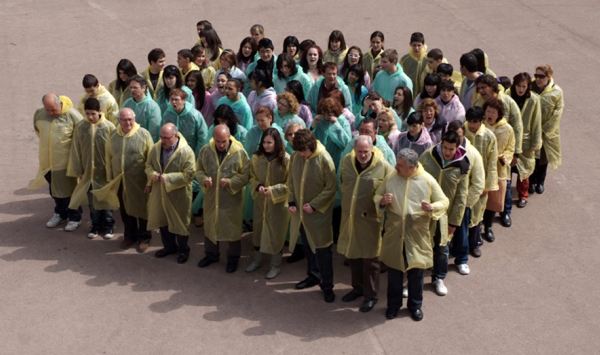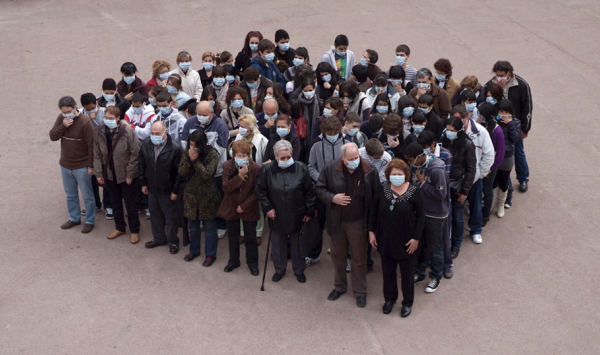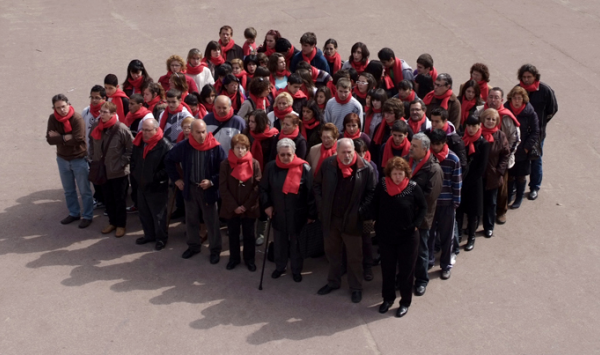- 14th EDITION 2022 / 2023
- 13th EDITION 2021 / 2022
- 12th EDITION 2020 / 2021
- 11th EDITION 2019 / 2020
- 10th EDITION 2018 / 2019
- 9th EDITION 2017 / 2018
- 8th EDITION 2016 / 2017
- 7th EDITION 2015 / 2016
- 6th EDITION 2014 / 2015
- 5th EDITION 2013 / 2014
- 4th EDITION 2012 / 2013
- 3rd EDITION 2011 / 2012
- 2nd EDITION 2010 / 2011
- 1st EDITION 2009 / 2010
Daniel Chust Peters IN RESiDENCE at the School Bernat Metge
AIR RACE: REPRODUCING THE WORKSHOP “AULA 209” FROM HUMAN ARCHITECTURES
A film showing the reproductions of the Room 209 workshop by more than one hundred volunteers, who form a human architecture and perform scripts composed after a discussion of everyday emotions. This piece, in turn is linked to the Air Force One projects, which the artist worked on parallel to the human architecture project.
Many artists have left the studio as their work space to intervene directly in the public space; others have taken nature or the urban space as their studio.
For more than twenty years, Daniel Chust Peters has been systematically reproducing his studio, taking it out and sharing it with others. In this gesture, in which he confronts his studio with different territories, contexts and people, is where the artwork, aesthetic knowledge, really begins for him.
With the intention of continuing this working practice, on 27 October 2009 the artist installed his studio in the Room 209 workshop, reserved for him at the Bernat Metge secondary school at 55, Carrer Menorca, in the Sant Martí neighbourhood.
In cooperation with thirty ESO compulsory secondary pupils and the teachers of several subjects (Visual and Fine Art, Catalan, Music, Philosophy and so on), Daniel Chust Peters embarked on the project Air race: using human architectures to reproduce the Room 209 workshop. The final result would be the audiovisual work shown in this reproduction, exhibited with all the elements generated by the creative process: drawings, photographs, objects, sculptures and other film footage.
For six months, a team of nearly forty people took part in the entire artistic process: concept, production, communication and, finally, public exhibition.
Over the course of the artistic process, this team would take over Room 209 in order to reconstruct it with the assistance of around one hundred people from the Sant Martí neighbourhood. For six months, the focus would be on both external inputs and the design of the architecture of the workshop and the Sant Martí neighbourhood itself and whether and how these affect the mood and behaviour of its inhabitant. Highly sensitive, the team would also take into consideration other types of external input: advertising illusions, film dreams, technological desires, urban planning promises, the aesthetic and moral values of information in the media and so on.
The different moods and other emotional aspects would be described in short scripts, a selection of which would be performed by around one hundred volunteers invited to the Bernat Metge secondary school at the same time as the Room 209 workshop was to be reproduced.



